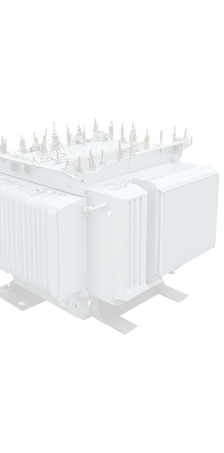Transformer Evaluation is a critical process in power systems. A small fault in a transformer can lead to major operational risks and unplanned outages. That’s where Frequency Domain Spectroscopy (FDS) plays a vital role. It helps identify insulation aging, moisture content, and dielectric losses—long before any real damage occurs. This blog explores the benefits of FDS and why it’s a game-changer in transformer condition assessment.
What is Frequency Domain Spectroscopy (FDS)?
FDS is a diagnostic technique that applies low-frequency signals to transformer insulation and observes its dielectric response. Unlike conventional time-based tests, FDS focuses on how insulation behaves across different frequencies. This provides a detailed, layered understanding of the transformer’s internal health.
While other diagnostic methods may miss early-stage problems, FDS detects subtle issues such as moisture penetration, insulation degradation, and aging—key indicators for proactive Transformer Evaluation.
Why FDS is Essential for Accurate Transformer Evaluation
FDS helps in monitoring changes in the insulation system over time. Here’s how it enhances the Transformer Evaluation process:
- Detects Moisture Content: Moisture is a transformer’s worst enemy. FDS quantifies moisture levels in insulation paper and oil, which are major factors in insulation breakdown.
- Aging Analysis: Over time, insulation materials degrade. FDS helps track this aging process accurately, enabling timely maintenance.
- Predictive Maintenance: Instead of reacting to transformer failures, FDS supports predictive maintenance. You can schedule repairs before small issues escalate into big problems.
- Improved Asset Management: It helps organizations plan transformer replacement cycles more efficiently, reducing costs and downtime.
Click here to explore how transformer dismantling is conducted after proper FDS-based evaluation.
How FDS Works in Simple Terms
The FDS method works by applying a sinusoidal voltage to the insulation over a range of frequencies (typically from 1 mHz to 1 kHz). The output current is measured and analyzed to determine insulation response.
The analysis yields a dielectric loss factor (tan delta) at each frequency, which provides insights into insulation condition. The results are plotted in a graph showing how insulation performs at different frequencies—like a health chart for your transformer.
Advantages of FDS Over Traditional Methods
- Non-invasive and Precise: Unlike some traditional tests that may require partial disassembly, FDS is completely non-invasive.
- More Informative: It reveals long-term degradation trends that standard testing might miss.
- Supports Modern Power Systems: Today’s electrical infrastructure demands high reliability. FDS ensures transformers meet those standards by improving Transformer Evaluation accuracy.
Real-World Applications in the Power Industry
Large-scale industrial plants and utility providers are adopting FDS more and more. It’s especially useful during procurement, maintenance planning, and after faults to determine whether the transformer can be repaired or must be replaced.
Before any large-scale industrial recycling or scrapping of a transformer, FDS is often the final evaluation method used. This ensures you’re not throwing away recoverable assets.
Cost Savings and Environmental Benefits
By extending the operational life of transformers, FDS indirectly supports environmental goals. It delays unnecessary industrial scrap and reduces the carbon footprint related to manufacturing new transformers. It also cuts down on waste associated with premature disposal.
Moreover, when a transformer reaches end-of-life, it is first evaluated through FDS, and if decommissioned, sent to scrap equipment buyers who responsibly recycle valuable materials. This ensures minimal loss and maximum reuse.
FDS and the Circular Economy
We’re seeing a shift towards circular operations in the power sector. Techniques like FDS help utility providers and industries align with sustainable business models. Instead of instantly replacing aging transformers, they’re being assessed, repaired, or recycled using methods backed by solid data.
Companies engaged in Transformer Evaluation also partner with industrial scrap metal recycling firms to ensure eco-friendly disposal when needed.
Summary: Why Choose FDS for Transformer Evaluation?
To wrap up, FDS is not just another test—it’s a comprehensive diagnostic solution. Here’s why you should consider it:
- Delivers more detailed data than standard tests
- Detects early signs of insulation aging and moisture
- Saves cost through predictive maintenance
- Supports sustainability and recycling
- Helps make informed decisions about repair vs. replacement
If you’re in the energy or recycling industry, working with reliable partners for Transformer Evaluation and recycling is crucial. Companies like JJ Liquidations offer end-to-end solutions—from FDS-based assessments to complete transformer dismantling, ensuring responsible recycling of valuable components.



